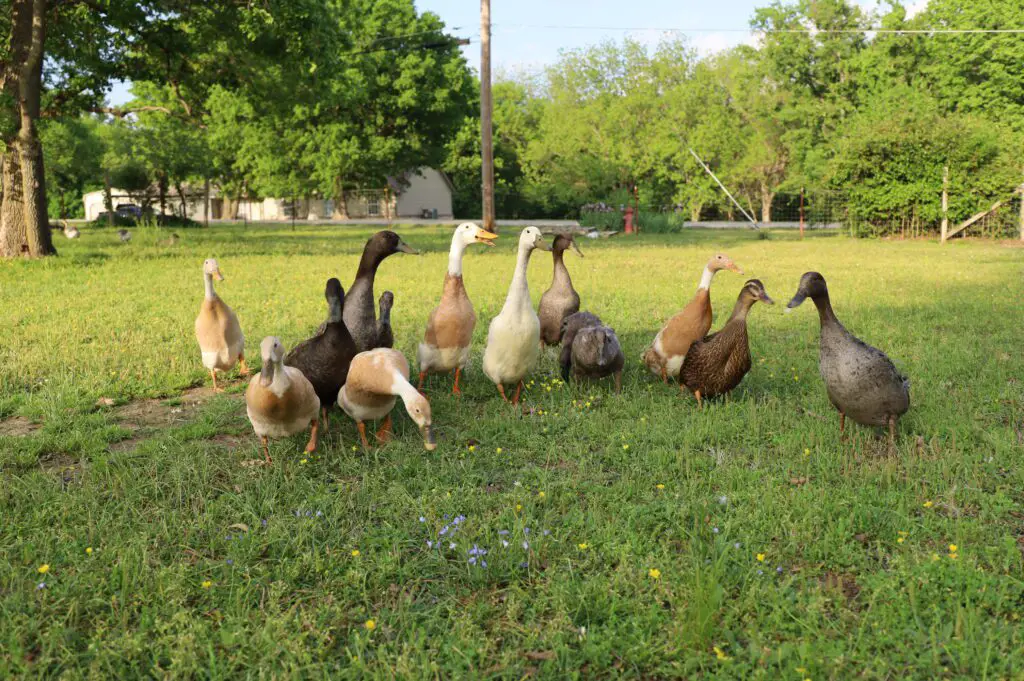The dream of living off the land, growing your own food, and embracing a more self-sufficient lifestyle has become increasingly popular in recent years. Homesteading is a way to reconnect with nature, reduce your environmental impact, and gain greater control over your life.
However, starting a homestead can be an overwhelming endeavor. In this comprehensive guide, we will walk you through the process of how to start a homestead, with detailed, specific instructions to help you make informed decisions and achieve success on your journey. You can even start a homestead if you don’t have a lot of money.
Research and Planning: Laying the Groundwork for Your Homestead
Before you can even think about breaking ground on your homestead, it’s essential to spend time researching and planning. This stage lays the foundation for your future success.
Define your goals and objectives: Take the time to consider why you want to start a homestead and what you hope to achieve. Be as specific as possible. Your goals will help guide your decisions throughout the process.
Learn from others: Join online forums, attend workshops, and read books and blogs to learn from experienced homesteaders. This knowledge will be invaluable as you begin your journey.
Create a budget: Determine your financial resources and create a realistic budget for your homestead. This should include costs for land, construction, equipment, animals, seeds, and ongoing maintenance.
When we started planning we had lofty dreams! But, we looked at what prices were for homes and land in our area and knew that we could afford about 5 acres based on the size home we wanted. So, that’s what we looked for.
Choosing the Perfect Location for Your Homestead

Location is critical when it comes to starting a homestead. You’ll need to balance your personal preferences, budget constraints, and practical considerations to find the ideal spot.
Urban vs. rural: Both urban and rural homesteading have their pros and cons. Consider the lifestyle you desire, access to resources and markets, and the size of the land you need when making your decision.
Climate and weather conditions: Your location’s climate will dictate the types of crops you can grow and the animals you can raise. Research the average temperatures, precipitation levels, and extreme weather events in your desired area.
Soil quality and composition: Test the soil in your desired location to ensure it can support your homesteading needs. Healthy, fertile soil is crucial for productive gardens and fields.
Water availability: A reliable water source is essential for irrigation, livestock, and household use. Consider the availability of wells, springs, or nearby bodies of water.
Local zoning and regulations: Familiarize yourself with local laws, zoning restrictions, and building codes to ensure your homestead is in compliance with regulations.
We spent about two years looking for the perfect place. We had a list of needs and wants. The city we love in does not allow farm animals within city limits. We also have 4 kids and I work from home, so we needed a home with plenty of space inside as well as outside. Those kids also like to ride their bikes to the park and around town, so we didn’t want to be too far out if possible.
We found the perfect house (above) that hit every single one of our needs and wants after a very long search! We are just outside of town and outside of city limits so we can have our animals and the kids are still close enough to go to the park! Our homestead is 5 acres, just what we wanted!
Acquiring Land and Preparing the Site
Once you’ve identified the perfect location, it’s time to acquire the land and prepare it for your homestead.
Purchase or lease land: Determine whether you want to purchase or lease the land for your homestead. Each option has its benefits and drawbacks, and your choice will depend on your budget and long-term goals.
Clear and level the land: Remove any brush, trees, or other obstacles from your building sites. You may need to level the ground to create a stable foundation for structures like your home and barn.
Plan your homestead layout: Consider factors like sun exposure, drainage, and accessibility when planning the layout of your homestead. Create a detailed map that includes the locations of your home, garden, animal pens, and other essential features.
I’m going to fully admit, we are winging it when it comes to planning. We found this home during all of the housing craziness of 2021, so we jumped on it. The property we bought had a horse barn and some fencing great for horses, but not smaller livestock and birds. We have a drainage pond, but it’s not really functional as just a pond. Updates to the pond will come! Someday!
Building Your Homestead: Structures, Gardens, and Livestock
With your land prepared, you can begin the exciting process of building your homestead.
Construct your home: Your home is the heart of your homestead. Consider factors like energy efficiency, durability, and aesthetic appeal when selecting materials and designing your home. You may choose to build a traditional house, a tiny home, or even convert an existing structure like a barn or shipping container.
Build outbuildings and infrastructure: Depending on your homesteading goals, you may need to construct additional structures such as a barn, greenhouse, or workshop. Additionally, consider the infrastructure you’ll need, such as fencing, pathways, and irrigation systems.
Establish your garden: Choose crops that are well-suited to your climate and soil conditions. Start by tilling the soil, adding necessary amendments, and installing any necessary irrigation systems. Plan your garden layout, taking into account factors like crop rotation and companion planting to maximize productivity.
Acquire and care for livestock: Research the types of animals best suited to your homestead and learn about their specific needs for shelter, food, and care. Start with a manageable number of animals and expand as you gain experience and confidence in animal husbandry.

How to start a homestead? Fencing. (Ha!) So far, we have added in a LOT of fencing. We started with fencing the backyard for the dogs. Then we bought a chicken coop and fenced in a section of the yard. We then added in a section fenced off for the ducks (and geese). We just recently added in a smaller, natural coop for the quail. We have also done some clearing of the land and planted some fruit trees.
We will probably put in a full garden next year and will update the barn for goats.
How to Start a Homestead: Develop Essential Skills
Learning how to start a homestead is an essential part of the process. Homesteading requires a diverse skillset. The more you can do yourself, the more self-sufficient you’ll become. Invest time in learning and honing these essential skills:
Gardening and crop cultivation: Learn about soil health, organic pest control, and effective watering techniques to keep your garden thriving.
Animal husbandry: Gain knowledge in animal care, breeding, and common health issues to ensure the well-being of your livestock.
Food preservation and storage: Become proficient in methods like canning, freezing, dehydrating, and fermenting to extend the shelf life of your harvests and enjoy homegrown food year-round.
Carpentry and building: Acquire basic carpentry skills to build and maintain structures on your homestead, from raised garden beds to barns and fences.
Basic plumbing and electrical knowledge: Learn the fundamentals of plumbing and electrical systems to handle minor repairs and installations, saving you time and money.
There is A LOT to learn when it comes to homesteading. We have chosen to take an approach that makes the most sense financially and for the animals in our care. We want them to all live their best lives, so we are slowly adding in new animals and new facets of our homestead as we learn more and are better prepared. I’ll fully admit that I am a little overwhelmed by starting a garden, so I just haven’t done it yet!

Implementing Sustainable Practices for a Greener Homestead
A key aspect of homesteading is embracing sustainability. Incorporate these eco-friendly practices into your homestead to minimize your environmental impact and increase self-sufficiency:
Composting and recycling: Turn kitchen scraps and yard waste into nutrient-rich compost for your garden. Recycle or repurpose materials whenever possible to reduce waste.
Renewable energy sources: Consider installing solar panels, wind turbines, or a small-scale hydroelectric system to generate clean, renewable energy for your homestead.
Water conservation techniques: Implement rainwater harvesting, greywater recycling, and drip irrigation systems to conserve water and reduce your reliance on external sources.
Sustainable farming practices: Embrace organic gardening methods, crop rotation, and integrated pest management to maintain healthy soil and reduce the need for chemical inputs.
Our compost is set and we are creating some amazing soil for next year’s garden. I’m learning as much as I can about sustainable farming and water conservation so that I am ready!
Overcoming Challenges and Embracing the Homesteading Lifestyle
Starting a homestead is a rewarding journey, but it’s not without its challenges. Be prepared to face these common obstacles and considerations:
Isolation and social challenges: Homesteading can be an isolating experience, particularly in rural settings. Build a support network of fellow homesteaders, neighbors, and friends to stay connected and share knowledge.
Time and energy demands: Homesteading requires hard work and dedication. Establish routines and schedules to manage your time effectively and avoid burnout.
Pests and predators: Learn about the common pests and predators in your area and implement strategies to protect your garden and livestock.
Financial considerations and budgeting: Careful financial planning is essential to the success of your homestead. Keep track of your expenses and income, and adjust your budget as necessary.
Conclusion
Starting a homestead is a challenging yet incredibly rewarding endeavor. By following this step-by-step guide, you’ll be well on your way to creating a sustainable and self-sufficient lifestyle that aligns with your values and goals. Remember that patience and persistence are key, as you’ll undoubtedly encounter obstacles and setbacks along the way.
As you progress on your homesteading journey, continue learning and adapting. Network with other homesteaders, stay informed about new sustainable practices and technologies, and share your knowledge and experiences with others. Building a homestead is not just about achieving self-sufficiency; it’s also about fostering a sense of community and contributing to a more sustainable future for all.
To further support your homesteading journey, consider seeking out additional resources such as books, blogs, workshops, and local organizations. The wealth of knowledge and experience available to you is vast, and tapping into these resources can help you overcome challenges and achieve greater success on your path to self-sufficiency.
So, go ahead, roll up your sleeves, and embark on the incredible journey that is homesteading. The rewards, both tangible and intangible, are well worth the effort. I hope you will stick around and join us on our journey as well!








